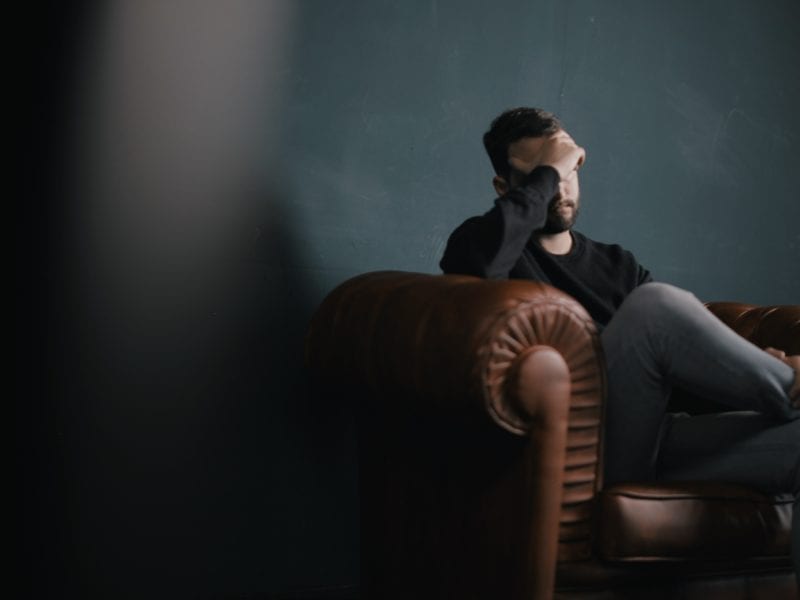One of the most unfortunate effects of the COVID-19 lockdowns has been on the declining mental health of students across the nation. Students that have been forced to adapt with remote learning and a lack of normalcy, creating mental health problems due to the public health crisis, social isolation, and economic recession.
Now that most students are headed back to classrooms, the threat of school shooters and active threats may reemerge–or could possibly become a more frequent occurrence. Even before COVID-19 forced schools to close, active school shootings were a serious cause for concern.
Let’s take a look at some of the possible circumstances that can threaten students and show how Nightlock’s door barricades are the right solution to protect students and faculty in uncertain times.
Remote learning can increase feelings of alienation and
depression
During the tail-end of the 2019 – 2020 school year, when many students were forced to learn from their computers and mobile devices, many educators observed how students learning were experiencing symptoms of alienation and depression in this environment. These feelings have been strongly linked to school shootings. With the unpredictability of schools that may close due to coronavirus outbreaks and more remote learning, students may lash out at their lack of agency in these situations.
More students are being prescribed antidepressants and
ADHD medications
With the limiting of normal school activities, such as the reduction/closure of sports and the arts, many students are being prescribed antidepressants and other behavior-modification medications to counteract negative feelings in their disrupted lives.
However, there has been a large body of research that has shown that psychiatric drugs can make students manic, psychotic, aggressive, suicidal, and homicidal. Furthermore, these reactions can be exacerbated when an antidepressant is withdrawn, the dose lowered, and/or may reappear when the drug is resumed. Considering that many school shooters were taking or withdrawing from psychiatric medications at the time of their assaults, this can be a legitimate cause for alarm.
Cyberbullying has increased during the pandemic
With remote learning forcing students to spend more time online to learn from teachers and interact with their classmates, cyberbullying has been on the rise. Some studies have shown a dramatic increase in cyberbullying by 70 percent. Considering that cyberbullying has been correlated with a rise in school shootings, these are grim statistics that every parent and educator should be aware of. Addressing issues of cyberbullying and treating them as serious cases in this vulnerable time can mean the difference between life and death.
Students may feel left behind
COVID-19 has placed many school budgets under pressure to accommodate new health protocols, lowering the emphasis on a comprehensive education that would occur under normal circumstances. According to a new study, there is a strong case that suggests that lockdowns resulting from the pandemic will undo months of academic gains. This, ultimately, will leave many students behind.
Competition of formerly high-achieving students can weigh on their identity, causing a decline in their mental health and lead to a sense of hopelessness. Students that may have previously showed no symptoms of depression or anxiety could become dangerous and unstable.
Further compounding the issues of students left behind is the reality of reduced school budgets, which now must account for expensive COVID-19 protocols. Many schools that have had budget issues may not have the resources and budget allocation to handle programs to bolster student self-esteem or even adequate counseling services. Considering that schools are the de facto mental health system for many students, this lack of safety net will be especially disruptive for children from lower-income families.
Ventilation may leave students vulnerable
Another unforeseen effect of schools during the pandemic is the relaxing of lockdown protocols to accommodate the new coronavirus protocols. Recommended protocols for COVID-19 are projected to be at odds with active shooter policies in schools. While it is recommended that doors remain open to increase ventilation, having doors closed provides protection when an armed individual is seeking vulnerable targets.
Take Action to Protect Your Children Today
The truth is that declining mental health is the leading cause of school shootings and other violence occurring on school campuses. Understanding this bleak reality is the first step to keep your children and school faculty safe from harm. The second step is to take immediate action by installing Nightlock’s patented line of door barricades in schools.
Nightlock’s Made in the USA door barricade devices have been designed and proven to protect against active shooter threats. Compliant with safety/building codes for schools, these door barricades have been installed across the United States to prevent school shooters and active threats from harming students and school faculty. Here’s why Nightlock’s door barricades are the first-choice in school security:
- The fast deployment of Nightlock’s door barricades can instantly protect students from an active shooter threat in seconds.
- Nightlock’s patented line of door barricades are strong enough to stand up to brute-strength attacks when deployed, acting as a deterrent for determined individuals to cause harm to others.
- When compared to other door barricade devices used in schools, Nightlock door barricades more offer comprehensive protection at cost-efficient pricing.
- Nightlock’s door barricades are easy to install and deploy, which ultimately reduces the strain to school budgets.
Contact Nightlock today to protect schools today.


 Are Masks Enough? Why Sneeze Guards are Vital for Comprehensive School Safety
Are Masks Enough? Why Sneeze Guards are Vital for Comprehensive School Safety